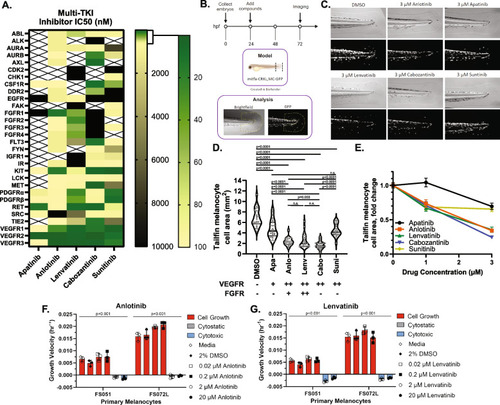Fig. 2
- ID
- ZDB-FIG-241206-2
- Publication
- Smith et al., 2024 - Receptor tyrosine kinase inhibition leads to regression of acral melanoma by targeting the tumor microenvironment
- Other Figures
- All Figure Page
- Back to All Figure Page
|
Blockade of FGFR/VEGFR receptors inhibits melanogenesis in a dose-dependent fashion. |

